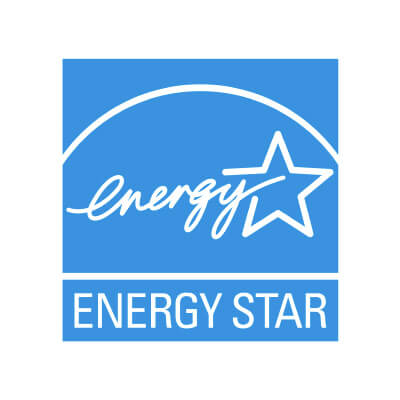2024 Gas Furnace Buyer’s Guide
By Rob Rice
Published January 10, 2024
Are You in the Market for a New Gas Furnace? Understand Your Options
For many homeowners, buying a new gas furnace is an exercise in confusion and frustration. A new furnace isn’t exactly your routine grocery store purchase, and aside from rummaging through Google search results, talking to people within one’s social circle, and listening to the sales pitch of those within the industry (which often only adds to the confusion rather than bringing clarity), you may be feeling lost on how to get your head around the dizzying number of options. Well, I’ve got good news for you: I’m going to spell out in clear, concise detail exactly what the furnace market looks like. Brands, models, jargon and lingo, you’ll be furnace literate in no time.
You may have begun to read the various manufacturer websites or spoken with sales people within the industry and come across jargon like “single stage,” “two stage,” and “variable speed,” as well as “80% efficiency” and “high efficiency,” but a clear explanation of this industry lingo is as elusive as a leprechaun and his pot of gold. Well, let’s dispel the mystery. Here’s what the various gas furnace options are, what their features are, and what all this unfamiliar language means.
Gas Furnace 101
To begin: it’s important to understand there are several gas furnace manufacturers on the market, and some of them sell the same product under multiple brand names. Here’s a list:
Bryant = Carrier = Payne
Trane = American Standard
Rheem = Ruud
Daikin = Goodman = Amana
Coleman = York
Lennox
…and so on. While these brands were once separate companies, consolidation has occurred within our industry, and now many of the brands are equivalent, with the exception of minor details like the brand name, the color of the paint on the furnace, and the model number. To be clear, a comparable Bryant furnace is identical to a comparable Carrier, you get the idea.
When you explore the furnace offerings of each of these manufacturers, you’ll find there is a pattern–they all offer two groups of furnaces, 80% efficiency and high efficiency (95%+). Within each group, there are typically three models to choose from, a single stage furnace, a two stage, and a variable speed. To explain what each of these are:
Single Stage Furnaces
A single stage furnace is a furnace with one output. If you think about what a furnace does, they basically do two things; they produce heat and they move air. Any time a single stage furnace operates, it always produces heat and moves air at one output–it only runs on full output.
Two Stage Furnaces
A two stage furnace is a furnace with two outputs, a low and high. This low/high function applies to both the heat production and fan speed; when the heat output is on low, the fan speed will also be on low, and when the heat is on high, so will the fan. When the furnace changes from low output to high or vice versa, this change is automated. The purpose of this two output function is to provide you with the following four benefits:
- Quieter operation–the furnace will run on low output most of the time, so it runs quieter most of the time. When it runs on high output, it generates the same noise as a single stage.
- A more stable and even temperature in the home–sometimes a home has warmer and cooler spots, or the temperature oscillates up and down a few degrees between the furnace turning on, off, and on again. A two stage furnace can help to maintain a more stable and even temperature throughout the home.
- A little more air filtration–two stage furnaces tend to circulate more air overall vs. single stage units, which means a greater quantity of air through the filter, and hence a little cleaner air in the home.
- A little less stress on the furnace–what generates a lot of the stress on a furnace is the on and off as well as the operating temperature. The two stage furnaces run at a lower temperature when operating on low output, and they tend to have fewer on and offs. This results in a little less stress (although admittedly any positive impact on reliability and longevity is tough to measure).
Two stage furnaces are very popular; people find them to be a good balance between cost and benefits.
Variable Speed Furnaces
A variable speed furnace is the high-end option. This unit is also a multi-stage furnace, and so it has the exact same four benefits outlined for the two stage furnace above. What makes a variable speed unit different from a two stage is that it tends to have more fan speeds. The idea behind a variable is that it is supposed to do everything a two stage furnace does, it just does it better (i.e., even quieter function, and so on).
In addition, variable speeds can be sub-divided into two groups, standard software vs. advanced, communicating software. The standard software models can be paired up with any third party thermostat–Honeywell, Nest, Ecobee, you name it–this model will most likely work with the thermostat model of your choice. In contrast, the advanced software variables require a thermostat from the same manufacturer which has that same software. Be aware that while the advanced software furnace will sometimes operate with a third party thermostat, you will lose all of the advanced software features without the specific thermostat they are designed to be paired with. It would be a waste of money to purchase an advanced software variable and not pair it with the intended thermostat (why pay for the advanced software if you’re not going to use it?). Some of these advanced features are:
- If a problem arises with an advanced variable furnace, the thermostat will notify you of the problem on its display as well as by email or alerts to your phone via WiFi. It will notify you of what the problem is (in terms of an error code), when the problem occurred, and how many times it has occurred. In other words, you’ll have built-in diagnostics with an alert system.
- Some homeowners want to be able to turn the furnace fan on without turning the heat on (i.e., fan-only function), which you can do with any furnace (as long as it is wired to do so), but with most furnaces you only have one fan speed. With the advanced software units, you’ll often have multiple speeds to choose from at the thermostat, low, medium, and high, for example. Families with allergies, asthma, or who simply want to breathe cleaner air enjoy this feature because they can turn the fan on low so that it runs quietly while allowing the fan to run 24/7 so that they’re always receiving air purification, with the result being the cleanest air they can hope to breathe.
There are additional advanced software features beyond these two, and some manufacturers have certain unique features others do not. Rather than present an exhaustive list, I think the above gives you an idea of what to look out for as you spend time on the manufacturers’ website and speak with heating contractors’ sales staff.
The final detail worth noting about the advanced variables is that in the high efficiency group, they are available in a greater number of heating outputs. Historically, variable speed furnaces have two heating outputs (a low and a high just like the two stage) with a variable speed fan (this is a fan that has several fan speeds rather than one or two as found with the previous two furnace models). About a decade ago, the manufacturers began to roll out advanced variable furnaces which have many heating outputs (sometimes as many as 50 to 100). They call these “modulating” furnaces. The idea behind a modulating furnace is that it provides all the same benefits as the two stage but does a better job, i.e. they run even quieter, do a better job of balancing temperatures, and so on.
Coming Full Circle
So, let’s recap: there are two groups of furnaces, 80% efficiency and high efficiency, with the three models outlined above in each group, and this is true for all of the manufacturers.
A Bit About Furnace Efficiency
So what is furnace efficiency? 80% efficiency, 95% efficiency–you’ll see this jargon used frequently in the context of gas furnaces, and I’ve used it above as well. But what does it mean exactly for a furnace to be 80% (or some other) efficiency? To answer that, I need you to tolerate two short paragraphs on physics and gas furnace design, and then all will be clear.
Returning to what a gas furnace does, let’s recall they do two things–they produce heat and they move air. They’re a fire inside of a box with a fan. The fan moves air to pick up the heat from the flame, and once heated, the fan sends that heated air into your home. Simple enough. However, a fire doesn’t just generate heat, it also generates exhaust gases, and while you want the heat in your home, you don’t want the exhaust. So, a gas furnace needs a way to separate the air you breathe from the flame and from the exhaust while allowing the heat generated to be input into the home’s indoor air.
Well, it turns out gas furnaces do have a component known as the heat exchangers that serves the purpose of separating the air you breathe from the flame and from the exhaust it generates. The flame burns on the inside of the exchangers. The exchangers are composed of fairly thin metal, which allows them to be a good conductor of heat. The heat from the flame transfers through the walls of the exchangers into the air on the other side, which is the air you breathe. The air you breathe picks up this heat as it is moved by the main fan across the exchangers, whereupon it proceeds through your ductwork and into the home. Basically, the exchangers isolate the flame and exhaust to the inside of the exchangers while allowing the heat to transfer to the air on the other side. This gives you the heat you want in your home without any of the exhaust. With this foundation, we’re ready to understand furnace efficiency.
When the HVAC industry refers to a furnace being 80% efficient, the efficiency rating is the percentage of heat generated that transfers through the walls of the exchangers into the air you breathe on the other side. The remaining heat exits the home with the exhaust gases. In other words, an 80% efficiency furnace will provide you with 80% usable heat, 20% wasted heat. Or to put it another way, the efficiency rating is the quantity of heat that the furnace actually uses to heat the home, the rest is sent out the exhaust pipe with the exhaust gases into the atmosphere outside. A 95% efficiency furnace provides you with 95% usable heat, 5% wasted heat. For the same amount of heat generated, a high efficiency furnace uses more of the heat it generates to heat the home, and therefore it wastes less heat.
How to Decide
When choosing the furnace that is right for you, understand that buying a furnace is a lot like buying a car; any car will get you from A to B, but some cars have certain benefits and features others do not have. If you care to have those benefits, you pay for them, if you don’t care, then you don’t pay. This is analogous to furnaces, as any furnace will heat your home, but some do so with certain benefits you may or may not care to have. It’s up to you what features (if any) you value and which furnace you think you’ll be satisfied with. Hopefully the outline above helps you make an informed decision!
Addendum
The furnace market is not static, it is slowly evolving to offer new features. One of the market trends is toward increased efficiency. As of July 3rd, 2019, the manufacturers are now required by the Federal Government to produce all of their furnaces with more electrically efficient fan motors. This means single stage and two stage furnaces no longer utilize alternating current fan motors, they now use direct current fans, as the variable speed furnaces have for many years. Another market trend is toward more comfort features. If you aren’t in an immediate need for a furnace, be sure to check back, because as new features arrive, we’ll be updating this article.
Furnace Brand Reliability
See data on which furnace manufacturers are most and least reliable.
Furnace Options
See all the furnace manufacturers we offer.
Swipe





